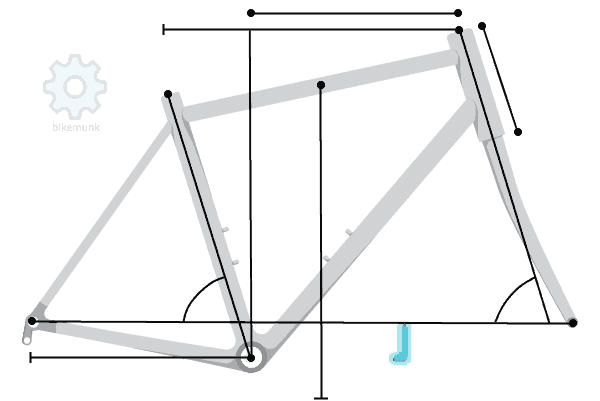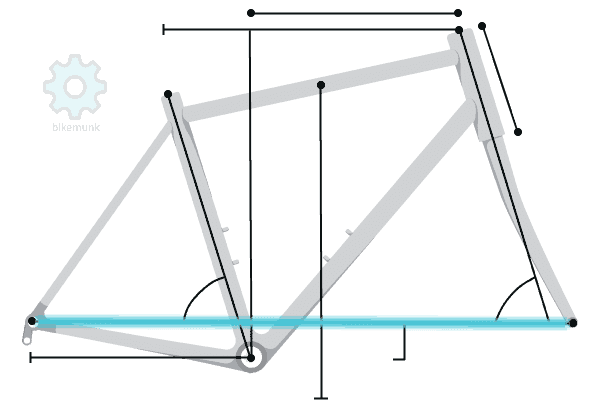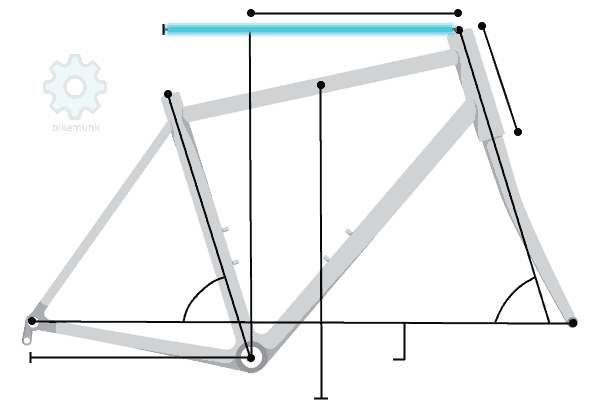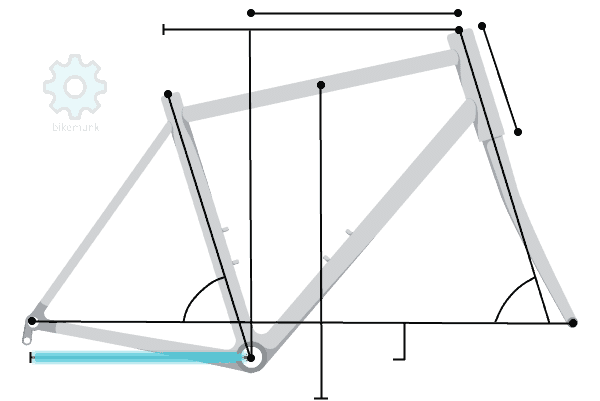You want a bike that can do it all -- get you to work in the morning and take you off-road on the weekend. Specialized's Diverge line of bikes is designed as adventure bikes, meaning they can perform well on the road, but they also do well in rougher terrain. Let's talk about the Diverge's different models and components, and then let's compare it other bikes of its class to sniff out key differences you'd want to know about before pulling to the trigger on this beast.
What’s This Bike Designed to Do?

Specialized's Diverge series is designed to be an adventure bike, meaning it can handle rides on uneven terrain and gravel but is equally at home on pavement. It's ideal for long rides, particularly long rides on mainly paved roads, with the occasional journeys off-road.
According to Bicycling, the Diverge blurs the line between a road bike and touring bike and is designed to be an affordable option for more adventurous riders. Since it handles well on pavement and gravel roads and rough terrain, it can be perfect for daily trips to work or around town, as well as for off-road excursions on the weekend.
Who is This Bike Good For?
The Specialized Diverge is perfect for riders who plan on staying on paved, main roads but who also want the option of going off-road when needed. Changes made to the bike between the 2017 and 2018 model mean that it's more comfortable for those who want to ride for longer distances.
For example, the reach is slightly shorter on the newer model, which creates a more comfortable, albeit slower, ride. The bike's designers have also made the stack a little taller and have lowered the bottom bracket to offer a more stable ride.
- Groupset
Specialized makes several Diverge models, each at a different price point and with various features. The entry-level model, the Diverge E5, features an aluminum frame, while the priciest model, the S-Works Diverge has an 11r carbon fiber frame, which is lighter in weight and stiffer than aluminum. The Diverge Sport is the middle ground and features a frame made from 9r carbon.
Specialized is known for producing its own specially engineered carbon, known as Functional Advanced Composite Technology (FACT). FACT carbon differs from other carbon fiber out there regarding its weave and materials.
The components are a lot of what you pay for if you decide to go up in price within the Diverge line. Higher-end models also move away from aluminum frames and into carbon, which affects both weight and performance quite a bit.
Pros
Cons
The main selling point of the Diverge E5 (espeically with the entry level version) is going to be the performance the bike provides while still retaining surprising versatility. The bike can be fast, especially as you increase your budget, but even if it feels quick on the roads, it's going to be plenty comfortable on trails as well.
Expert Opinions
Cyclist Nigel Hyde test-rode the 2018 Diverge Comp E-5, one of the aluminum frame models. He stated that: "The only things I did not like about the Comp E5 were the saddle and the brakes. The brakes, I simply thought they weren't strong enough. I want hydraulic brakes . . . The saddle, I found it uncomfortable."
JE James Cycle had this to say about the bike: "It is very capable with its endurance geometry to serve as your winter road bike, be it fitting mudguards, larger volume tires or rear racks across the composite chassis."
After owning the bike for about a year, AndysMTBLife had this to say: "One thing I have been really impressed with with the Diverge is the frame, and the frame welding and the quality on the frame is really good. The paint is really good as well. I have been on a lot of off-road gravel rides on this bike, and the paint has proved to be really durable, no chips."
How Does the Diverge Compare to Other Specialized Bikes?
To get a feel for the Diverge model rides compared to other bikes Specialized offers, we’ll compare its geometry against other bikes around the same price point that are built for roughly the same purpose: the CruX Sport, the Tarmac Pro, the Roubaix Elite, and the Allez Sprint Comp. Quick note: we’ll be using the entry level version of the DIverge E5; there are other versions of this bike, and their geometry might differ slightly.
Stack Height

The stack on the Diverge E5 is higher than everything else in this group, which bike be a bit perplexing, since you’ll typically find higher stacks on bikes with more aggressive racing-style stances, and the E5 isn’t necessarily the most racing-centric bike in this bunch. Sitll, it’s not a big difference; you can just expect your butt to be a bit higher, which is something to keep in mind if riding position is important to you.
Bottom Bracket Drop

The bottom bracket drop (BBD) is higher for the E5 than it is for other bikes on this list. It’s no mountain bike, but you’ll have a bit more elbow room if you plan on riding on slightly rougher terrain.
Wheelbase

The wheelbase measurement of the E5 is longer than other Specialized bikes in its class, although not by much, and 100cm could run as a very rough average wheelbase length. Still, in this group, which leans more toward racing performance, the E5 has a longer wheelbase and might not be as spry as the athletes we’re measuring it against here.
Price
Just barely breaking into four figures, the Diverge E5 is the least expensive Diverge model available and near the lower end of the pricing scale for most Specialized bikes. This price gets you a solid aluminum frame and a comfortable ride, as well as entry-level components. For a carbon frame and higher level parts, you'll need to look to Specialized's more expensive models.
Differences in Components
The Diverge E5 offers an aluminum frame, which is similar to other mid-range Specialized models. It also has a Shimano Claris derailleur, which is one of the least expensive models on the market. In comparison, the Crossroads has a Shimano Tourney, which is a 7-speed derailleur (the Claris is 8-speed) and the Sirrus Sport has the Shimano Sora, a 9-speed derailleur that is one level up from the Claris.
The Diverge E5 is also one of the only Specialized models with mechanical brakes. The Sirrus, Epic Expert, and Enduro Comp all have more heavy duty hydraulic brakes. Meanwhile, the most inexpensive bike of the bunch, the Crossroads, has linear pull V-brakes.
How Does the Diverge Compare to Other Bikes on the Market?
Now let’s look at how the Diverge E5 compares to similar bikes from other brands. Of course, you could plug 100 bikes in here and get slightly different results, but the idea is to pick a nice sample and see how the E5 compares. For this comparison, we’ll use the Diamondback Haanjo, the Trek 520 Disc, the Kestrel RT-1100, and the GIant AnyRoad.
Stack Height

Compared to similar bikes produced by other brands, the Diverge E5 is about in the middle of the pack, and perhaps a bit on the high side, which makes it ideal for riders who favor speed over comfort. That said, the difference between stack heights among these models is mostly negligible.
Effective Top Tube Length

Of the field listed, the Diverge E5’s effective top tube length is longest, but not long compared to other bikes not listed here. This average ETT offers a balance between the maneuverability and lightness.
Chainstay Length

As with the top tube length, the Diverge E5 is somewhere in the middle when compared to the chainstay length of other bikes of this class. This aids in the all-purpose nature of the Diverge E5’s appeal, creating a happy medium between power transfer and greater traction and comfort.
Differences in Components
One thing the Diverge E5 has in common with the other bikes on the list is the type of brakes it uses. All of the bikes we compared it to also use mechanical brakes, although the brand varies from bike to bike.
The Diverge also uses the lowest end derailleur compared to the other bikes on the list. For example, the Giant AnyRoad and the Diamondback Haanjo both have Shimano Sora derailleurs while the Trek 520 Disc has a Shimano Deore.
Since the five bikes are at the lower end of the price spectrum, most of them are made of aluminum, except the Trek, which is made from steel.
